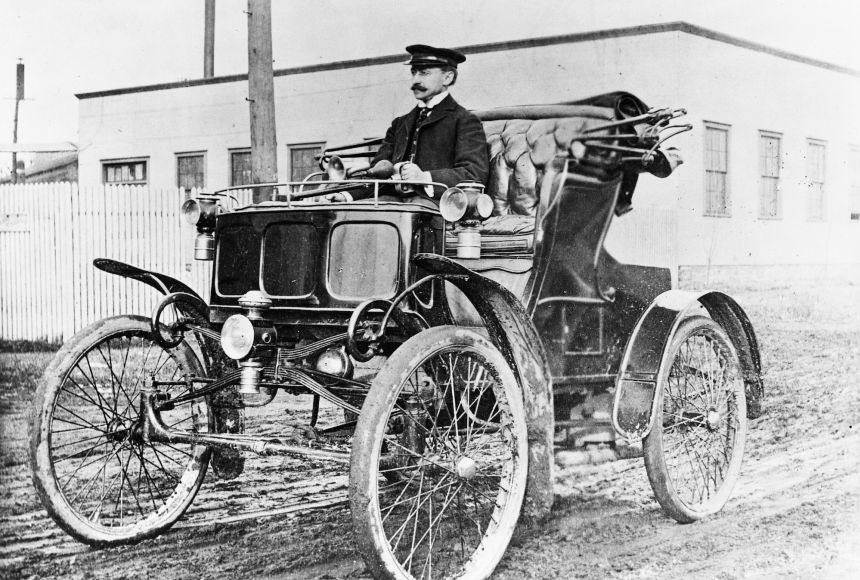ENCYCLOPEDIC ENTRY
ENCYCLOPEDIC ENTRY
Automobile
Automobile
The four-wheeled transportation vehicle symbolizes the promise and the pitfalls of the modern age.
Grades
5 - 8
Subjects
Conservation, Engineering, Social Studies, U.S. History
Image
Packard Model B Automobile
The modern automobile, developed in the late 1800s, is based on the internal combustion engine, invented by Dutch scientist Christiaan Huygens in the late 1600s. Here, William D. Packard is driving his Model B Packard near the company's first plant.
Photograph from Bettmann

Media Credits
The audio, illustrations, photos, and videos are credited beneath the media asset, except for promotional images, which generally link to another page that contains the media credit. The Rights Holder for media is the person or group credited.
Director
Author
Production Managers
Program Specialists
Producer
Intern
other
Last Updated
November 15, 2024
For information on user permissions, please read our Terms of Service. If you have questions about how to cite anything on our website in your project or classroom presentation, please contact your teacher. They will best know the preferred format. When you reach out to them, you will need the page title, URL, and the date you accessed the resource.
Media
If a media asset is downloadable, a download button appears in the corner of the media viewer. If no button appears, you cannot download or save the media.
Text
Text on this page is printable and can be used according to our Terms of Service.
Interactives
Any interactives on this page can only be played while you are visiting our website. You cannot download interactives.